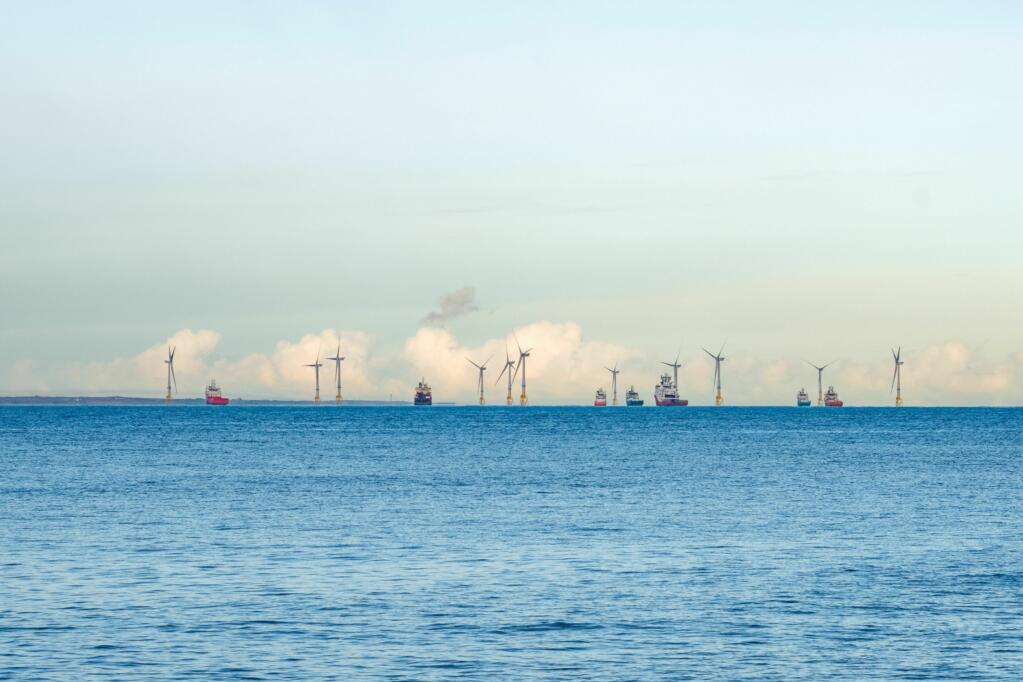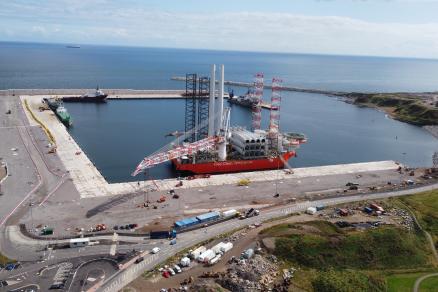
Navigating the winds of change: Scottish ports and offshore wind

Port of Aberdeen CEO, Bob Sanguinetti, discusses why ports are vital in the development of offshore wind.
As the world transitions towards a more sustainable future, Scottish ports have a generational opportunity to be drivers for economic growth, energy security, and decarbonisation.
According to Scottish Development International, Scotland has a project pipeline of more than 45 gigawatts and a report last year from the Floating Offshore Wind Taskforce found that initially, a minimum of three to five ports in Scotland will need to be transformed into new industrial hubs to ensure they are ready for the mass deployment of floating wind by the end of this decade.
It’s clear that harnessing the potential of offshore wind is complex, and it demands public and private sector investment and collaboration to avoid ports turning from a strategic enabler to a project bottleneck.
While much of Scotland’s existing port infrastructure is robust, it requires substantial upgrades to accommodate the scale and complexity of offshore wind operations. Turbines are colossal structures, demanding advanced logistical and engineering capabilities. For example, the planned Moray West offshore wind farm turbines will stand 285 metres high from the surface of the sea to the highest point of the blade tip.
With more than 160 floating wind turbine designs currently on the market, ports face the unenviable challenge of planning infrastructure investments to enhance their capacity and capability without clarity on what future projects will require in terms of quayside length, depth, and laydown area.
“It's imperative that the public and private sectors unite to secure the necessary funding for port enhancements and expansions.”
Regulatory and planning must also be considered. Streamlined planning processes are essential to leverage the full potential of Scottish ports in the offshore wind sector. Bureaucratic hurdles and delays could dampen investor confidence and deter project developers, turning ports into impediments rather than key enablers.
Developing Scotland’s offshore wind capacity and capability is not just about producing clean energy, it’s about building economies and communities around a growing industry and new technologies.
By fostering skills, jobs, and infrastructure related to offshore wind, ports can drive regeneration in coastal areas and beyond. This transformation has the potential to position Scotland as a global leader in offshore wind, exporting technology and expertise.
So, how do we unlock the full potential of Scotland's ports? It's imperative that the public and private sectors unite to secure the necessary funding for port enhancements and expansions.
The UK Government awarded £160 million to two ports earlier this year through its Floating Offshore Wind Manufacturing Investment Scheme and the Scottish Government's Strategic Investment Model (SIM) process, which facilitates collaboration between ports, developers, and government, is ongoing.
The demand for FLOWMIS funding far outstripped what was on offer and while 10 SIM projects have advanced to ‘priority’ stage, viewed has having high relevance and interest to developers, many more are still under consideration, highlighting the huge demand.
“An additional £25 million investment for a capital dredge project will cement our position as a national hub for floating offshore wind. This is a tangible example of where industry and government partnership is needed to support the Just Transition and deliver Scotland’s offshore wind ambitions.”
Port of Aberdeen’s £420 million investment in our transformational Aberdeen South Harbour expansion project, which officially opened in September 2023, underscores our commitment to this sector. An additional £25 million investment for a capital dredge project will cement our position as a national hub for floating offshore wind. This is a tangible example of where industry and government partnership is needed to support the Just Transition and deliver Scotland’s offshore wind ambitions.
It’s clear we’re in a pivotal moment for Scottish ports. With strategic investments, forward-thinking policies, and collaborative efforts, these ports can become powerful enablers of the next generation of offshore wind, driving Scotland towards a greener, more prosperous future.
However, without urgent action to address the existing challenges, these same ports risk becoming obstacles that stifle progress, resulting in key scopes, and jobs, being relocated overseas.
The path Scotland chooses will have lasting implications not just for its energy landscape but also for its economic and environmental legacy.




